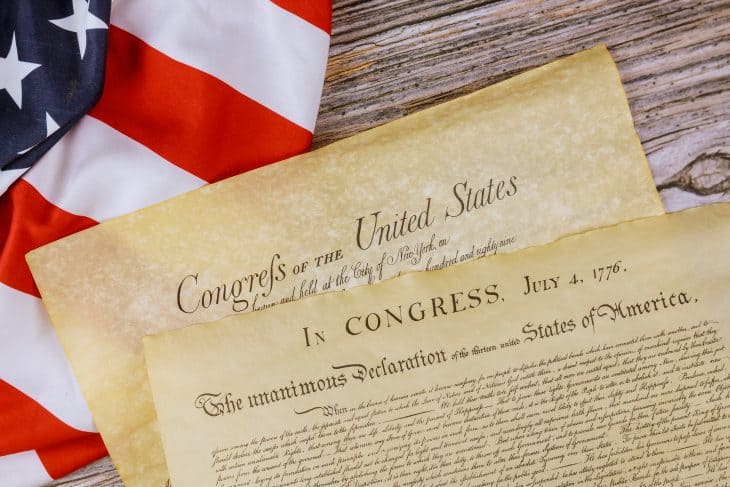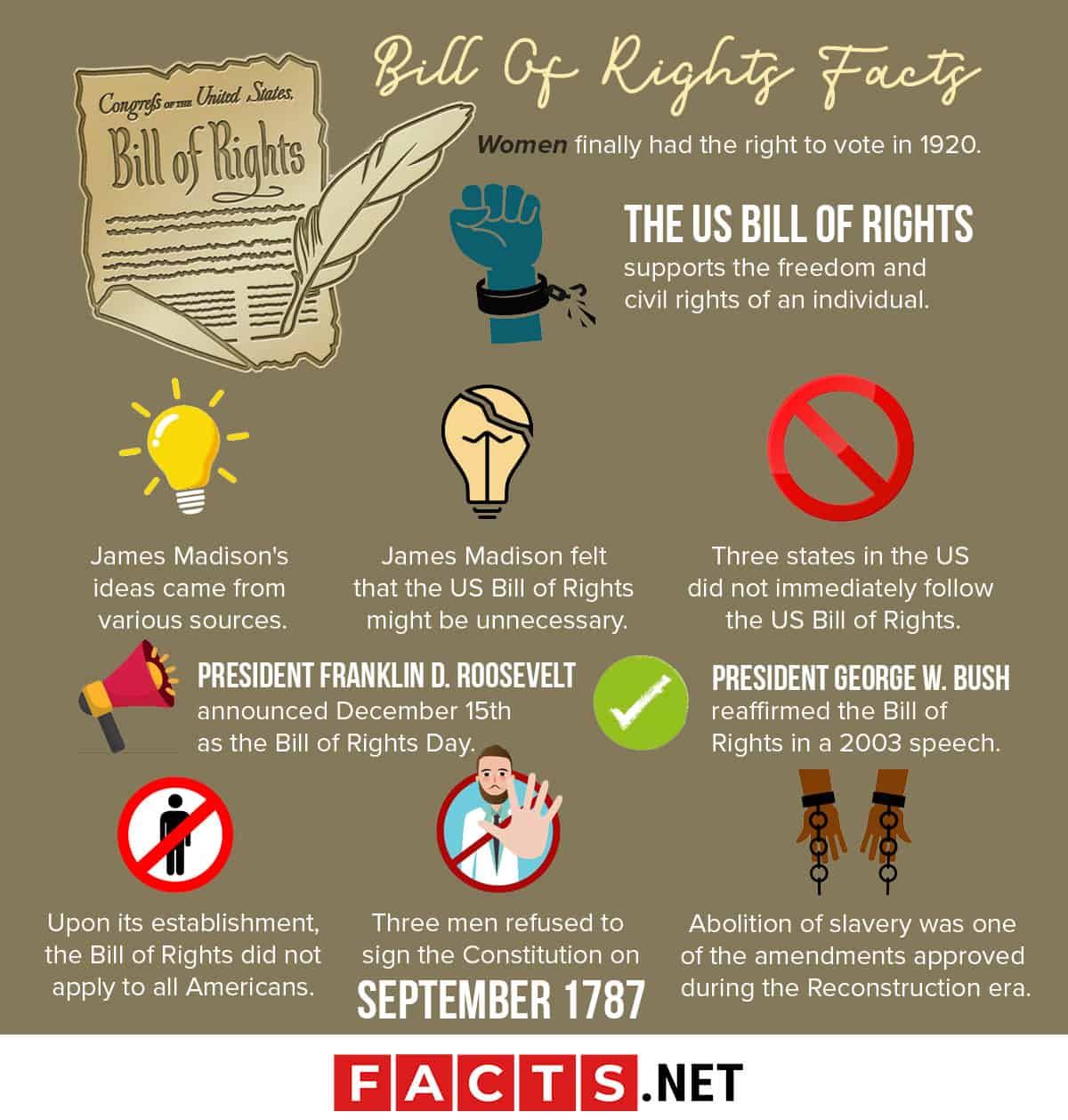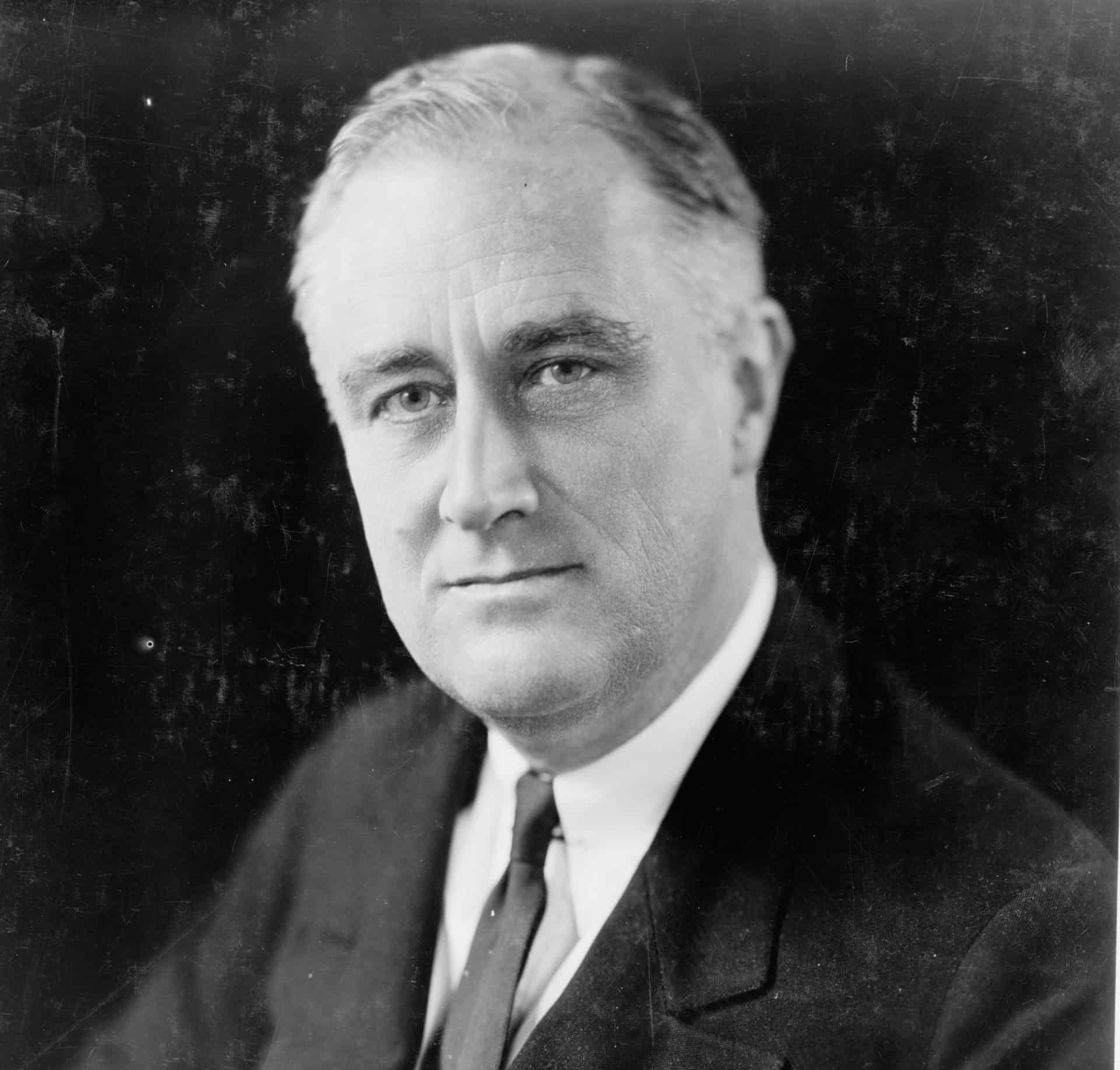
Created in 1789, the US Bill of Rights guarantees its citizens the freedom of speech, the religion of choice, freedom of the press, and assembly among others. Even after many revisions throughout history, the document now exists as a result of centuries of progress and change. Essentially, the Bill of Rights should serve as the heart of the government towards its people. Find out more about your rights with these Bill of Rights facts.
- The US Bill of Rights was created on September 25, 1789.
- The US Bill of Rights was ratified or approved on December 15, 1791.
- The US Bill of Rights contains the first 10 amendments to the country’s Constitution.
- For the first 150 years, the US Bill of Rights didn’t make a significant impact on judicial decisions.
- Native Americans were denied from having full American citizenship until 1924.
- The Founding Fathers established the US Bill of Rights for their people.
- The US Bill of Rights aims to limit the government’s authority.
- It is a list of the most important rights of the country’s citizens.
- The main authors of the US Bill of Rights were James Madison and the 1st United States Congress.
- The American statesman and philosopher, James Madison became known as the “Father of the Constitution” and the 4th president of the United States.
- The first United States Congress is the US Senate and US House of Representatives.
- The Supreme Court only began referring to the Bill of Rights in the early 1900s.
- Most Native Americans lived separately with a designated land area. Nevertheless, Congress allowed citizenship to all Native Americans born in the US on June 1924.
- The second amendment includes the right to form a militia and to keep and bear arms.
- The first amendment focuses on each individual’s freedom.
- In total, the Bill of Rights has twenty-seven ratified amendments.
- The Bill of Rights describes the militia as able-bodied citizen from ages 18 to 45 and divides the militia into two classes (National Guard and reserve militia).
- The third amendment restricts the quartering of soldiers in private houses during peacetime and a “prescription” from the law in times of war.
- The fourth amendment includes the individual’s protection from illogical searches and confiscations.
- The fifth amendment ensures that no one can be forced to testify against themselves or much known as self-incrimination.
Bill of Rights Facts Infographics

The US Bill of Rights supports the freedom and civil rights of an individual.
These include freedom of religion, speech, press, assembly, and the right to petition the government. It also protects the individual from unreasonable searches and seizures without a probable cause. Similarly, the Bill of Rights emphasizes due process, protection of an individual for excessive fines and bails as well as the right to a prompt public trial.
Women finally had the right to vote in 1920.
In 1920, the 19th amendment legally abolished practices that hindered women’s suffrage. Proposed on June 4th, 1919, the US government officially implemented this amendment on August 18th, 1920.

James Madison's ideas came from various sources.
Known as the Father of the Constitution, James Madison had drafted the US Bill of Rights based on various sources. To name a few, Madison drew inspiration from the English Bill of Rights, Virginia’s Declaration of Rights, and ideas from the Enlightenment period.
James Madison felt that the US Bill of Rights might be unnecessary.
Initially, James Madison felt hesitant to release the US Bill of Rights, as he feared it may be useless or harmful. However, he pushed through and formally introduced the bill of rights in 1789 after becoming a congressman. Later on, Madison served as the 4th US President from 1809 to 1817.
Three states in the US did not immediately follow the US Bill of Rights.
While generally well-received, three states did not immediately send their approval of the Bill of Rights to Congress until 1939. In particular, these states were Connecticut, Massachusetts, and Georgia. It was only after a century and a half that these states write in their approval, marking the time where the entire United States followed the Bill of Rights’ principles.
President Franklin D. Roosevelt announced December 15th as the Bill of Rights Day.
In 1941, President Roosevelt announced December 15th as Bill of Rights Day to commemorate its 150th year since ratification. As part of this remembrance, the Virginia copy of the Bill of Rights traveled across the whole country in 1991, visiting the capital of each state as part of its bicentennial anniversary.

President George W. Bush reaffirmed the Bill of Rights in a 2003 speech.
During his presidency, George W. Bush gave commemorative remarks about the responsibility of the government to secure the rights of all and treat each person with equality. Furthermore, he stated that “The true American revolution was not to defy one earthly power, but to declare principles that stand above every earthly power.”
Upon its establishment, the Bill of Rights did not apply to all Americans.
While the Bill of Rights aims to stand for all kinds of people, its existence for more than 130 years doesn’t favor all Americans. During its ratification, the benefactors in the amendments were only white men who owned properties.

Three men refused to sign the Constitution on September 1787.
Those three men were Edmund Randolph of Virginia, Elbridge Gerry of Massachusetts, and George Mason of Virginia. Apparently, they believe that the document had a defect due to the absence of the Bill of Rights.
Abolition of slavery was one of the amendments approved during the Reconstruction era.
In 1868, the US government first supported the movement to abolish slavery. The ratification of the US Constitution’s 14th Amendment allowed citizenship to every person born or naturalized in the United States. On paper, this guaranteed the equality of rights of all people and their protection by law.
Was this page helpful?
Our commitment to delivering trustworthy and engaging content is at the heart of what we do. Each fact on our site is contributed by real users like you, bringing a wealth of diverse insights and information. To ensure the highest standards of accuracy and reliability, our dedicated editors meticulously review each submission. This process guarantees that the facts we share are not only fascinating but also credible. Trust in our commitment to quality and authenticity as you explore and learn with us.
